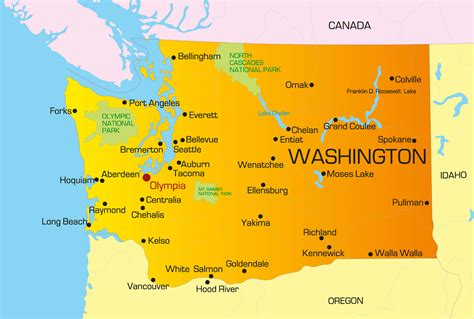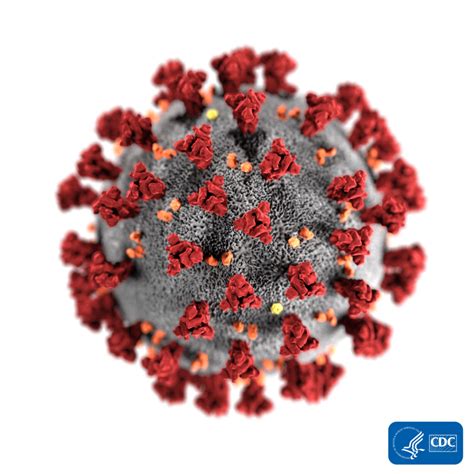The Covid-19 pandemic has hurt this country in innumerable ways. Beyond making people ill and killing just under a million, it caused incalculable economic harm that we will be living with and recovering from for years to come.
It also divided and polarized us even more than we were before, which I’m not sure I would have thought possible back in 2019. That’s not good because when it comes to public health, divided we fail.
So, how did it all happen?
I wanted to find out and I went back to the very beginnings of the pandemic, and I’ve come to understand how a virus became a political issue and how public health officials, more than anything else, failed in terms of communications strategy.
After all, everyone involved was wrong about some of the things they said along the way, that much is, at this point, obvious. Those that said it was nothing to worry about in the beginning, were wrong. Similarly, those saying that fewer deaths from variants means that there’s nothing more to be done are also wrong.
At this point, I believe we need a reset, if you will.
We need to start fresh and do the things that make sense, lest we find ourselves in a never-ending loop of doing the same and expecting a different result.
Let’s take a walk down the memory lane that starts in the very beginning of 2020. I think you’ll find it worthwhile to do so and perhaps by the end, you’ll be ready to start anew. You’ll find that sources are linked throughout the piece and at the end you’ll find links to additional material I relied on when writing.
I learned a lot going back to look at the facts of the pandemic, and I sincerely hope this helps you in some way too.
The Earliest of Days…
On December 31, 2019, China reported to the World Health Organization (WHO) the first deaths from pneumonia. At this point, no one knows it’s a new virus.
The next day, China closes a seafood market. A few days after that, China tells the WHO that the virus is not SARS or MERS… and the investigation continues. On January 7th, Chinese authorities announce that the virus is a “novel coronavirus,” initially named 2019-nCoV by the WHO.
On January 11th, China announces the first death from the novel coronavirus; a 61-year-old man, infected at a seafood market, dies of respiratory failure caused by pneumonia. Then on January 17th, China announces a second death from the new virus… and that’s the first time the United States responds to the outbreak by implementing screenings of travelers coming from Wuhan at airports in San Francisco, New York, and Los Angeles.
At this point, I have no idea what’s going on and I don’t care at all. Neither do you.
We had been previously threatened with SARS, MERS, Bird Flu, Ebola, Zika… more than I can remember off hand, and none had ever come here or been any sort of problem for Americans, so why would this be any different?

Just 10 Days Later…
Then on January 21st public health officials find the first case of the novel coronavirus on U.S. soil, in Washington state, but two days after that, on January 23rd, the WHO says that the coronavirus does not yet constitute a public health emergency of international concern.
The White House announces the formation of a new task force charged with monitoring and containing the virus’ spread on January 29th, and the next day the U.S. reports the first confirmed case of person-to-person transmission of the virus. That very same day, the WHO determines that the outbreak constitutes a Public Health Emergency of International Concern (PHEIC).
Just one day later, President Trump announces that his administration will deny entry to foreign nationals who have traveled in China in the last 14 days. Some accuse the president of being xenophobic or even racist.
On February 11, 2019 the WHO names the coronavirus Covid-19. I still don’t feel threatened by the virus… and neither do you. I had no plans to visit China, so it didn’t seem like cause for worry.

It’s Only Been a Month…
It’s only 30-days since the whole thing began and most of the U.S. economy is shut down, toilet paper is in very short supply, and Dr. Anthony Fauci is telling us to wash our hands “50 times a day.” Soon he will learn that the virus is airborne, but at this point he’s got us washing our groceries before putting them away. Our vocabulary is starting to change, with ideas like “social distancing,” entering the American lexicon.
But, at this point, most of the country hasn’t seen a single case of what is now called Covid-19. Sure, New York seems to be having problems, but I can only imagine how someone in South Dakota might be thinking about the alleged danger associated with the new pandemic.
Flattening the Curve…
It’s March 13th when we’re told that shutting down businesses, cancelling events, and quarantining at home is the only way to “flatten the curve,” which basically refers to lowering the number of new cases being discovered each day. Soon mask mandates go into effect, becoming a most visible reminder that our world has changed.
Depending on where you live, most restaurants and bars are closed. People are working from home and picking up dinner “curbside.” Concerts, church services, and all sorts of indoor and outdoor events are cancelled. And in other places, most notably states with Republican leadership, nothing changes.
The political divide over the virus has begun.
Originally, we’re told the shutdowns are temporary, like a few weeks. I remember some debate over opening things up by Easter… then, as cases began to decline, it was to be by Memorial Day. Then it was July 4th festivities that we couldn’t attend.
Cases surge again during the summer of 2020, less populated states for the first time find the virus in their own backyards. The Sturgis Motorcycle Rally in South Dakota is dubbed a “super spreader event,” and we all start to see that this is not going to end quickly.
Meet the Task Force…
I think it’s safe to say that President Trump both downplayed the virus’ severity AND took it seriously enough to introduce a special Coronavirus Task Force, with its leader, Dr. Anthony Fauci. He also very aggressively funded the development of vaccines even though no one knew whether they would work or how long they’d take to develop.
The Task Force now comes on television every afternoon In March, April and May of 2020. We watch, waiting to be told what to do to protect ourselves and our loved ones. But isolation remains the leading idea for controlling the virus’ spread.
We’re allowed to go to Target, but not Best Buy… and many are questioning the logic of it all, especially those who don’t yet see any real threat.
By March we learn that the virus is airborne, so instructions to wash one’s hands “50 times a day,” as Dr. Fauci described his own habit, fall by the wayside. And, while at first, Fauci says we don’t need to wear face masks, by the time we shut down, people are shopping for masks that match their outfits.
We finally start reopening things slowly on Memorial Day, 2020, although I’m not entirely sure I understand why as we still haven’t “flattened the curve” and we seem to be going from one surge to another.
The virus isn’t affecting all states equally, and some states continue to resist shutdowns, mask mandates, and cancellations of events. While people in one state stay home and wear masks religiously, those in other states appear to be open for business as usual, thus adding to the confusion.

The Smart vs. the Dumb?
Those taking the virus most seriously, by wearing masks and shutting things down feel smarter than those who aren’t… superior, even. And since many of the states pushing back against shutdowns and mask mandates are largely rural, the narrative seems to fit.
It’s a city mouse vs. country mouse sort of thing, if you remember the Aesop’s Fable from childhood.
President Trump plays to his base of rural voters by downplaying the risk of Covid-19, he will later admit to Bob Woodward that he knew he was downplaying the severity of the situation in order to not cause people to panic. In a similar vein, Dr. Fauci will later admit that he initially downplayed the need to wear masks because he wanted front-line workers to be able to get them.
The country is dividing over how the virus should be handled, over whether masks are an important public health measure… or a political statement, a debate that continues to this day much as it did during the influenza pandemic of 1918, when the “Anti-Mask League” that formed in San Francisco in 1918 to protest the city’s mask mandate, were demonstrating in the streets and making national headlines.
As the man said, “history doesn’t repeat itself, but it often rhymes.”
The summer of 2020 brings the next major surge in cases, likely brought on by re-opening too early and letting our collective guard down. However, as the summer in 2020 is coming to a close, we get the first bit of really good news related to the virus.
Extra! Extra! Read all about it: A vaccine is coming!
The presidential election of 2020 is fast approaching, when we hear the news that a vaccine is not only on the horizon, incredibly, it’s expected to be available by year end. The vaccine is being developed with one purpose in mind: to reduce the severity of Covid-19.
It is NOT being developed to reduce infection or transmission of the virus, and no one knows how it will work.
It seemed nothing short of miraculous that such a vaccine can be developed so quickly, and many are skeptical, on both sides of the political divide. A national poll conducted by the Kaiser Family Foundation in December of 2020 shows that 27 percent of Americans don’t want to get vaccinated for one reason or another, “even if it was free and determined safe by scientists.”
With Trump still in office, it’s mostly Democrats that are skeptical of the vaccine’s safety. Not surprisingly, that sentiment will reverse itself after Biden is inaugurated.
On December 14, 2020, over 300,000 Americans are dead as the first shots are to go into the arms of frontline healthcare workers. The vaccines are touted by The New York Times headline as being:
“The weapon that will end the war’: Vaccinations begin across virus-ravaged America.”
After healthcare workers get their shots, it’s made available to nursing home residents, if I remember correctly, then to those over 65… and before we know it, it’s our turn. By Spring 2021, the vaccine is available to most who want it, although there are some troubling racial disparities that are being discussed.
The government holds a kickoff press conference imploring Americans to get their shots, and most do exactly that. Our family gets our shots in March of 2021 and the feeling of relief from a long nightmare is palpable. We drive home feeling protected, maybe even a little invincible.
Still the death count continues to rise and horror stories detailing Covid deaths make daily headlines. Hospitals are overwhelmed at every surge. But Americans are on a path to vaccination and those who refuse are said to be not only harming themselves, but also putting their neighbors and loved ones at risk.
The vaccine wars have begun in earnest.
A Little Bit of Luck…
It is Spring of 2021, when a little luck appears to have come our way. The vaccines had been developed with a singular purpose: to reduce the need for hospitalization and the number of deaths from Covid-19, but during the first half of 2021, they also appear to do a good job at preventing infection and transmission.
Sure, Fauci and his team, along with countless others in the medical community, warn us about the potential for variants of Covid-19 to arrive on the scene going forward, but they aren’t sure of anything, so we continue to revel in our newfound security resulting from being vaccinated.

Friday the 13th – A Day that Shall Live in Infamy
All of this leads up to May 13th, 2021 when Rochelle P. Walensky, MD, MPH, the 19th Director of the Centers for Disease Control and Prevention holds a press conference at which she surprises the entire country by saying that, if we were fully vaccinated, we no longer have to wear masks indoors… we are free to go about our lives secure in the knowledge that we are protected by our vaccinations.
As reported by Reuters on May 13th…
CDC Director Rochelle Walensky said the new guidance was based on a sharp reduction in cases, expansion of vaccines to younger people and vaccine efficacy against coronavirus variants.
“We followed the science here,” Walensky said. President Joe Biden emerged at the White House for remarks without a mask. “I think it’s a great milestone, a great day,” he said.
“If you’re fully vaccinated and can take your mask off, you’ve earned the right to do something that Americans are known for all around the world: greeting others with a smile,” he said, flashing a brief smile himself.
“In the past couple of weeks, we have seen additional data to show these vaccines work in the real world, they stand up to the variants, and vaccinated people are less likely to transmit the virus,” the agency said in a news release.
I think we’re universally shocked at the news. After all, only days before Dr. Fauci was telling us how important mask wearing still is… and now apparently isn’t.
It certainly wasn’t expected. The White House was only told about the press conference 90 minutes before it happened, and state governors didn’t know what was happening until they saw it on CNN like the rest of us.
We start to dine inside again almost immediately. Bars open. Sporting events return, travel plans are being made… and after a year in forced isolation, it is shaping up to be a pretty good summer.
Mission Accomplished?
President Biden holds a press conference in the Rose Garden to herald the news. In retrospect, it was reminiscent of Bush’s “Mission Accomplished” moment during the War in Iraq… too soon.
I too am surprised, but at the same time I’m happy. So happy that my wife and I book plane tickets to Scottsdale, Arizona, departing only a few days later. We are finally free, and we want to use our newfound freedom immediately. The summer ahead seems filled with nothing but potential. Maybe being vaccinated means that we’re all done with the virus.
It was all good news back in May, June and July of 2021.
The only remaining problem related to Covid, it appeared, was convincing everyone to get vaccinated. Nothing else mattered, testing took a back seat, according to the government and the media overall.
Yes, we knew that there could be “breakthrough infections,” but we were told that they’d be exceedingly rare and even if you got Covid, as long as you were fully vaccinated, the symptoms would be very mild, so everything seemed fine and dandy… for a few months.

The Delta Force
It’s early August 2021, when my personal euphoria starts to crack.
Even though I’m fully vaccinated and staying safe, as they say, I get Covid in my kitchen in early August. I get it from my stepson who is also fully vaccinated… and he gets it from his girlfriend’s mom, also fully vaccinated…. Who in turn gets it from her fully vaccinated boss.
My symptoms are relatively mild, but it’s not great. I have body aches for a few days that get pretty bad, and I lose my sense of taste and smell, which is just plain weird. I have to quarantine for 14 days (the CDC recommendation at that time) and that was simply boring. With not much to do, I start calling people I know around the country to see how they are faring pandemic-wise.
I learn very quickly that I am far from alone.
All of a sudden, I know maybe 20 other fully vaccinated people who now have Covid, even though they had avoided getting it until now. I know something is wrong. I can’t prove it, but I suspect that breakthrough infections are not nearly as rare as we’d been led to believe.
By early September, we hear of a new variant called Delta that you can get even if fully vaccinated.
Apparently, the vaccines are not as effective at preventing infection and transmission as they were with the Alpha variant. The vaccines are only good at reducing the severity of the virus should you get it, but the vaccines are not preventing people from getting it or spreading it.
Delta surges throughout the fall of 2021 and it’s not good. Hospitals are filling up again and it feels like, even though we shut everything down and sheltered in place, we’re right back where we started. Many that get Covid in those months are fully vaccinated.
How Many?
How many, you may quite reasonably ask? The answer is that no one knows.
Director Walensky made the decision not to track so-called breakthrough infections. It’s possible that since the vaccines appeared to be good at preventing infection and transmission with the last variant, and because such cases were thought to be exceedingly rare at the time, she believed there was no reason to track them.
It could also be that she believed that by offering the reward of going maskless, she would be encouraging more people to get their shots. That would have been naïve, in my opinion, but it could have played a role in her decision.
We may never know with certainty precisely why Director Walensky made that decision back in May, but regardless the rationale, it was obviously a mistake. Delta evaded the vaccine in terms of infection, so vaccinated or not, you could get it and spread it… and certainly many did.
To address this new reality, booster shots are approved by the FDA and those who elect to get their boosters will again start to feel safe, but confusion has become an epidemic in its own right.
Happy Holidays 2021: The Omicron Variant
Delta surged throughout the fall of 2021, but as the new cases started to decline, and with more people fully vaccinated and now boosted, many started planning to see their loved ones for the holidays. Even Dr. Fauci announced that he’d be spending Thanksgiving with his children and grandchildren, something he hadn’t done since before the pandemic began.
Next thing you know, however, another new variant is discovered in South Africa. Within days it’s in eight other countries and the following week it arrives in the U.S.
Omicron is its name, and it is said to be far more contagious than Delta, if not as deadly. Millions were getting infected, both vaccinated and not. Hospitals are again filling up and the number of deaths is again far too high.
The news shows footage of people waiting in unthinkably long lines to get tested. Some report waiting 8-9 hours for a PCR test before traveling over the holidays. It’s clear that we don’t have enough testing available. Even home tests are impossible to find… and these rapid tests aren’t as good at detecting Omicron as past variants.
The Biden Administration looks like they’ve been caught unprepared… because they have.
The availability of Covid testing, which had been described as critically important in 2020, had taken a back seat to the vaccines, and the country simply isn’t prepared for the outbreak of a new variant, even though we had been warned of the possibility by public health officials from around the world.
Omicron is said to be less virulent than Delta and those who have been vaccinated and boosted, ready to return to a new normal, take solace in that news. If they did get infected, it would be very unlikely that they’d be hospitalized or at risk of dying from the virus.

Spring of 2022: No more mask mandates.
There’s no question that by early 2022, the United States is experiencing Covid fatigue. It’s a very real condition that the WHO defines as: “… demotivation to follow recommended protective behaviours, emerging gradually over time and affected by a number of emotions, experiences and perceptions.”
By the Spring of 2022, this sort of fatigue appears to be driving public policy and potentially threatening our collective future and the WHO publishes a guide to overcoming it, titled: Pandemic Fatigue – Reinvigorating the Public to Prevent Covid-19.
Regardless of the actual numbers of cases and deaths, by March of 2022, almost every state announces that Covid restrictions, like mask mandates, are being lifted… and the mainstream media sounds like they’re only inches away from proclaiming the pandemic’s end. Curiously, this time it’s the blue states that lead the way… this time it’s Democrats who are downplaying the threat of Covid.
There’s no scientific basis for the belief that Covid has been contained and won’t reemerge.
Yes, Omicron cases are declining. Yes, more people are vaccinated and/or have had Covid, so we have greater immunity and the number of deaths can be expected to decline in the months ahead.
But, it should also be clear that we are only in yet another lull… experts from all over the world assure us that we can expect another new variant this year.
There is simply no evidence or scientific thought that says the pandemic is over.
Is it better today than it was two years ago? Certainly. Is it anywhere near over? Not even close. And the WHO has made clear that no country can expect to “vaccinate its way out of the pandemic.” They also state that we cannot “boost our way out.”
Poll every single public health authority world-wide and you won’t find one who agrees that the Covid-19 pandemic is over. We are simply awaiting the next variant, hoping that it won’t be more contagious or more virulent… hoping the protections afforded by the vaccines hold up against the next strain. Hoping that more get their booster shots, that more children get vaccinated.
But, as they say, hope is not a strategy.
More Variants Ahead…
Today, we should know that Covid is going to be with us for a long, long time. The Omicron variant of Covid-19 is the 13th variant of the virus. Already there is a sub-variant, BA.2, thought to be 30-60 percent more contagious than the original Omicron, that as of April 24, 2022, accounts for 90 percent of the new cases in the U.S. Only four of those variants have been classified as being “of concern,” by the WHO, but so what?
Why would we possibly believe that the virus will stop at the number fourteen when it comes to variants? Why would be sure that the next variants won’t be even more contagious or more virulent… or both. After all, it was the third year of the influenza pandemic of 1918 that was most deadly.
“If we could stop all COVID-19 infections around the world then the virus would be eradicated. Unfortunately, eradication is incredibly difficult, and historically we have only successfully eradicated two diseases, smallpox and the cattle disease, rinderpest.” (Sciencefocus.com, January 2022.)
Consider that to-date, in this country, we’ve had five distinct surges/spikes of Covid-19:
April 2020: Initial outbreak of Covid-19
August 2020: Summer Spike
January 2021: Winter Spike
September 2021: Delta Surge
December 2021: Omicron
March 2022: BA.2
What will the Next New Variant Look Like?
Already, as of April 25th, 2022, the new BA.2 sub-variant is doubling in the U.S. According to The New York Times Covid Data Tracker, in the second half of April, Kansas has seen an increase of Covid cases of 198 percent, and New Hampshire, Oregon, Michigan, and Delaware cases have doubled.
Yes, these new variants appear less severe than Alpha or Delta, but that shouldn’t be a reason to stop trying to contain the pandemic. The severity of Covid has not been our only problem.
When American Airlines cancelled 2400 flights in February, it wasn’t because of people hospitalized or dying… it was because someone on a flight crew was found to be positive, so they had to send the rest of the crew home for at least five days. The vaccines reduce the severity of Covid, they do not prevent you from getting it or spreading it.
The total relaxation of restrictions has led many to question: Are we following science, or political science?
What does “endemic” mean?
Remember when there was talk of us reaching “herd immunity?” Well, that went away as medical experts around the world explained that there would be no herd immunity in our near future. In fact, March of 2022, here’s how we’re looking at the topic of herd immunity: How We Got Herd Immunity Wrong.
Now the talk is about the virus going from pandemic to endemic, as if endemicity would mean a total return to normalcy… the essential end of worrying about Covid-19. That’s when it’ll become like the flu, the thinking goes.
The truth is that there is no real definition of endemic.
Some say that a virus becomes endemic when it’s stable in terms of the numbers of cases, hospitalizations, and deaths. But that could mean they stabilize at a very high level. One virologist at Johns Hopkins recently explained that endemicity could be once “most of the country has had Covid as a child,” which could be in 30-40 years.
The point is… it doesn’t matter whether it’s considered endemic or pandemic. Covid-19 is a global problem that is nowhere near solved. Even as of March of 2022, there are places like Germany and Hong Kong where the virus is every bit as much a public health problem as it was two years ago when the pandemic began.
In fact, Hong Kong’s fifth wave the worst since the pandemic began, as explained here: Hong Kong’s Fifth Covid-19 Wave – the worst yet.
And things like that will still be happening next year… and the year after that. We’re better able to handle it than we were in the beginning, to be sure, but we’re not out of the woods by any means.

The Answer in 2020 was TESTING, and it STILL Is.
I find it incredible to consider, but the last time the mainstream media wrote in earnest about increased testing being the key to controlling the spread of Covid-19 was September 2020. Here’s what was published by The National Institute of Health (NIH) about Covid testing on September 4, 2020.
Why Covid-19 Testing is the Key to Getting Back to Normal
It’s like, once the vaccines were certain to be made available to the public, the country forgot about the crucial role of Covid-19 testing and embarked on a singular campaign to compel people to get vaccinated. President Biden even made it sound like being vaccinated was the way to “earn” our freedom from masks.
Why then, have we abandoned mask mandates for both the vaccinated and unvaccinated as new variants are increasing case counts all over the country and around the world? My admittedly much more cynical view is that collectively our politicians have come to understand that public health mandates, like masks, don’t get anyone reelected. (This is an election year, right?)
It’s also clear that, with testing having fallen by the wayside and more home tests being used, the case data is vastly under-reporting the prevalence of the virus today and the CDC and Dr. Fauci are both saying that another surge is expected by Fall of 2022, if not before, as reported on April 8, 2022, by U.S. News & World Report:
Fauci Predicts Fall Coronavirus Surge as BA.2 Sends Infections Creeping Up – Adding that he would not be surprised if coronavirus cases increase over the next couple of weeks.
I should also point out that we are FAR less protected by vaccines than the media would have us believe because the number of vaccinated people that have received a third or fourth booster shot is relatively low and it’s likely that the protection afforded by the first two shots has waned by now.
Again, the data is not good, but some estimate that only 42 percent of the vaccinated population got their third dose and only 60% of those over 65 have received their third dose. Numbers for the fourth dose are undoubtedly even lower.
According to CDC’s COVID Data Tracker, as of March 16, 2022:
- 76.7% of the total U.S. population has received at least one dose of a COVID-19 vaccine.
- 65.3% has completed their primary series of two doses.
- Only about half of the booster-eligible population has received a booster dose and is considered up to date on their COVID-19 vaccines.
So, when the next surge comes, and it most assuredly will, it seems to me that we may see increased hospitalizations and deaths, even among those supposedly fully vaccinated, but not boosted.
The Core Problem with Covid: You can’t control what you can’t see.
Make no mistake about it, containing or preventing the spread of Covid-19 and its variants has posed some unique challenges.
Most notably, the virus is airborne and its spread can be asymptomatic, so you may never know if you have it and are spreading it. Recent studies have shown that you are most contagious three days before symptoms appear, so if you only test people who have symptoms, it’s too late… chances are they’ve already been spreading it for days.
And cloth masks, like those that match someone’s outfit for example, do little to protect anyone from anything.
According to the CDC in 2022:
“Loosely woven cloth products provide the least protection, layered finely woven products offer more protection, well-fitting disposable surgical masks and KN95s offer even more protection, and well-fitting NIOSH-approved respirators (including N95s) offer the highest level of protection.”
The Mayo Clinic, for example, now requires all staff and visitors to wear N95 or KN95 masks. And Leana Wen, MD, an emergency medicine doctor and public health professor at George Washington University, said last month:
“We have known for many months that COVID-19 is airborne and therefore, a simple cloth mask is not going to cut it.”
A few days ago, the airlines dropped their mask mandates after a federal court judge in Florida said the Centers for Disease Control and Prevention had overstepped its authority in requiring masks on public transportation.
Personally, I was thrilled to hear that the mask mandates on planes had ended… I hate flying four hours in a mask, but the CDC has already appealed the decision and many legal experts have been critical of the judge’s ruling.
The Florida judge wrote a 59-page ruling, you can click that link and read it for yourself, but basically she states that in her opinion, “the CDC had exceeded its authority and failed to follow proper rulemaking procedures.” (Many of my attorney friends have said the ruling used tortured logic and improper definitions and is likely to be overturned by a higher court, but what do I know.)
Why Fast and Accurate Testing is the Answer… the ONLY Answer.
So, since you can have Covid and spread Covid whether vaccinated or not… and since we’re not about to mandate that everyone wear N95 or even KN95 masks whenever we leave our homes, the only way we’re going to contain the spread of Covid-19 is to make fast and accurate testing widely available… and encourage people to use it… even when they don’t think they have Covid.
Think about it this way:
What if we had a test for Covid that looked like a popsicle stick that you could lick and would, in a minute or less, turn red if positive and blue if negative, like a home pregnancy test, if you will. Well, then we could open everything everywhere, right?
You’d wait in line to enter the indoor venue, lick the stick and when it turns blue, you’re in. Red and you won’t be allowed entry. We don’t have such a test today, but we’re getting closer.
Until that sort of testing is available, the only thing that can be done to identify cases before they’ve spread is to offer testing and encourage people to take one regularly, regardless of symptoms. Employers could offer free Covid testing every Monday, for example. That’s the only way you’ll catch cases before they disrupt the workplace.
It’s worth mentioning that the president gets tested regularly, along with everyone in the White House, which is how they caught the recent cases in the West Wing. If it’s good for the White House, why aren’t we following the same logic at companies or in free testing centers.
One reason is the cost. Covid funding has dried up and the Democratic controlled congress deleted it from the last spending bill they passed. Already, if you’re uninsured, you may have to shell out $125 for a Covid test, which I’d guess few will ever do. If you can’t afford health insurance, how are you going to cover that sort of cost for a test? And with 30 million uninsured in this country, it would seem that alone is a threat to our collective future.
Then there’s the issue of sick leave or the lack thereof. If I’m a minimum wage worker or anything close, am I going to test and risk being positive and therefore unable to work for a week when my rent is coming due? Not a chance.

My Conclusion…
So, yeah… we’re doomed to continue the dance with Covid-19 going forward. Maybe we’ll get lucky and future variants will be mild and less contagious than past… or maybe they’ll be worse and we’ll see a return to masks and people afraid to leave their homes. I don’t think anyone knows which way it will go with any certainty, but everyone agrees that it’s not over.
Dr. Manoj Gandhi, senior medical director at medical instruments maker Thermo Fisher Scientific, told Fortune Magazine recently that the pandemic is far from over and compared the country’s battle against the virus to a nine-inning baseball game.
“We are probably only in the fourth inning, maybe the top of the fifth. This virus is not going anywhere anytime soon, and we will end up seeing some new different variants down the line.”
Divided We Fail…
The way Covid-19 pandemic unfolded in 2020 further divided our already polarized society and I hope I’ve made it easier to understand why it happened the way it did.
For one thing, consider how quickly it became known, how fast it became a crisis that required a large part of the country to shut down and shelter in place. We didn’t even call it Covid-19 until February 11th, 2020… and only ONE MONTH LATER we were locked in our homes, unable to go to work, and afraid to visit our friends or family members.
That’s not a lot of time to understand what’s happening. For those in more rural states, it must have sounded insane that we were all of a sudden not allowed to leave our homes.
In addition, the virus was “novel,” meaning “brand new”, and we’ve been forced to learn about it on the fly, as they say. We didn’t have any experience with it, so as we gained such experience, the guidance changed making people feel as if the experts didn’t know what they were doing.
Confusion and Mixed Messages Don’t Help
In mid-April, the City of Philadelphia, as mask mandates were ending left and right, no pun intended, reinstated its mask mandate for indoor spaces, citing the rise in BA.2 cases. Three days later, the city reversed its position and eliminated the mask mandate.
Did we NEED to Shut Everything Down?
Recent studies have highlighted some of our mistakes along the way. One credible study conducted by Johns Hopkins recently showed that shutting down only prevented .02 percent of deaths due to Covid.
I hated hearing that. The lockdown cost me and millions of others a lot, in monetary terms among many others. Hearing that perhaps we should have done something different was frustrating, to say the least.
At this point, Fauci should retire.
Frankly, he never should have been given the role of spokesperson for the virus. He may be brilliant, but he’s not a professional communicator like say, Jen Psaki is. My father was a brilliant public health scientist too, but I wouldn’t have hired him to design or deliver messaging to the American people on anything.
Walensky may want to step down at some point as well.
My suggestion would be to create an international panel of medical and scientific experts to report on the virus in the future… and let’s get a British physician to take the lead on messaging. For one thing, an international panel would reduce the political nature of the reports… and for another, I think people trust British accents in this country. (Kidding, sort of.)
Just remember… sometimes trained, professional pilots crash airplanes. Not often, but sometimes they make mistakes and people die. However, that’s no reason to let ME fly the plane next time, right?
I hope this has helped those who managed to reach the end get their arms around where we’ve been related to the Covid-19 pandemic, how we got there and where we may be headed if we maintain our current attitudes.
At this point, Covid-19 cases are surging once again. Hopefully, going forward we’ll gain some common sense and forget about how we got here, forgive those who made mistakes, and overall come to understand that the virus was new and it came on fast, impacting different populations differently at different times. As a result, people all over the country saw things differently.
That was then, but this is now. Let’s see if we can’t come to understand each other better. I’m not saying it will solve the problems Covid will continue to cause, but it sure couldn’t hurt.
Mandelman out.
The 15 Covid-19 Variants We’ve Seen Since March of 2020:
Alpha (B.1.1.7, Q.1-Q.8)
Beta (B.1.351, B.1.351.2, B.1.351.3)
Delta (B.1.617.2)
Gamma (P.1, P.1.1, P.1.2)
Epsilon (B.1.427, B.1.429)
Eta (B.1.525)
Iota (B.1.526)
Kappa (B.1.617.1)
1.617.3
Mu (B.1.621)
Zeta (P.2)
Lambda (C.37)
Omicron (B.1.1.52, BA.2)
BA.2 (New Omicron Sub-Variant)
Deltacron (New Delta Sub-Variant; emerging as of 3/10/22)
Links to Additional Supporting Articles:
Is It Over? Experts Say No. March 6, 2022
Are Americans to Ditch Covid? Complicated. March 6, 2022
Why Stopping Covid Testing Would Be a Mistake March 6, 2020
A New Covid Variant Called Deltacron
Biden Vowed to Fix Testing, But He Didn’t Plan for Omicron
CDC Under Fire for Decision Not to Track Breakthrough Infections
Should We Track All Breakthrough Infections – Harvard Med
Covid will always be an epidemic virus, not an endemic one, scientists warn
Why Did American Airlines Cancel 2400 Flights?
Why the Second Wave of the 1918 Flue Pandemic Was So Deadly?
Here’s What the Third Year of the 1918 Pandemic Can Teach Us
Do the Math: Vaccines Alone Won’t Get Us Out of the Pandemic February, 2021
Impacts of the Covid-19 Pandemic on Rural America December, 2020
Covid Was Slow to Spread to Rural America, Not Anymore April, 2020
Johns Hopkins University Study Finds Lockdowns Only Prevented .02% of Deaths February, 2022
15 Good N95, KF94, and KN95 Face Masks to Buy Right Now April, 2022







